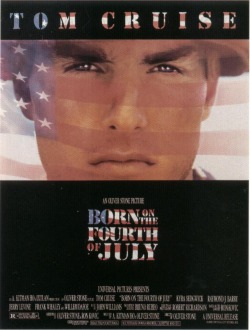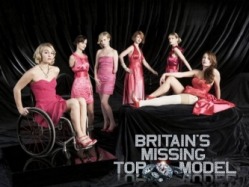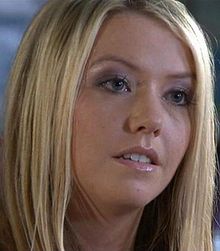Representation of Disability:
Research:

logo
A critical analysis of Media representation of disabled people:
It is true to say that the media is an extremely important part of our everyday life and as an industry has been critical in the dissemination of information to the mass population. However the influence that the media holds over society has not always been used to society's benefit, particularly in relation to disability, where the media has continued to add to the discrimination of disabled people. The media's contribution to disabled people's discrimination will be discussed through the following areas:
Use of Disabled Stereotypes:
The media continue to enforce disability stereotypes portraying disabled individuals in a negative un-empowering way.
In his 1991 study, Paul Hunt identified 10 stereotypes that the media use to portray disabled people:
Disabled people over the years have been marginalised within and through the media. These areas are as follows:
Theories of Disability:
Within the UK there are two main approaches to the study of disability: the medical model and the socio-political model. Barnes (1997) defines the medical model as the idea of disability as sickness, impairment, or deviation from normality. Within this, disability is viewed both as a medical issue and also a personal one (Abberley, 1997b; Barnes, 2003; Campbell, 1990; Johnston, 1997; Shakespeare, 1996). Impairment is seen as something that needs to be fixed, with the responsibility for this resting on the individual who is impaired. However, the medical model has been criticized because of its assumption that impairment equals an individual's loss. This approach is seen to depoliticize disability (Goggin & Newell, 2003) as it apportions responsibility for disability on to the affected individual.
Today, the most widely accepted approach to disability among theorists of disability is the social model. This model defines disability in terms of the environmental and social barriers imposed on disabled people by non-disabled society which limit or remove altogether opportunities to take part in community life (Altman, 2001; Oliver in Williams, 2001). This approach is reflected in the subsequent politicization of disability by disabled people (Abberley, 1997b; Barnes, 1997, 2003; British Council of Disabled People, 2002; Liggett, 1997; Shakespeare, 1996).
It had been expected that the analysis of articles on Ouch would produce results consistent with the social perspective on disability. However, as the results presented later in this article indicate, this was not the case. Instead, a third approach to disability was identified, one that while largely adhering to the tenets of the social model, also had some notable departures.
It is true to say that the media is an extremely important part of our everyday life and as an industry has been critical in the dissemination of information to the mass population. However the influence that the media holds over society has not always been used to society's benefit, particularly in relation to disability, where the media has continued to add to the discrimination of disabled people. The media's contribution to disabled people's discrimination will be discussed through the following areas:
- The media's creation and underpinning use of disabled stereotypes.
- The role of media influences: media organisations and their employees, political agendas, the intended audience and current societal trends.
- The use of images, language and terminology related to disability.
- The under-representation of disabled people in the media.
- The effect of media on disabled people.
Use of Disabled Stereotypes:
The media continue to enforce disability stereotypes portraying disabled individuals in a negative un-empowering way.
In his 1991 study, Paul Hunt identified 10 stereotypes that the media use to portray disabled people:
- An object of curiosity or violence
- Sinister or evil
- The super cripple
- As atmosphere
- Laughable
- His/her own worst enemy
- As a burden
- As Non-sexual
- Being unable to participate in daily life
- the character of Colin from the Secret Garden - a character who falls into the stereotype of "Pitiable and pathetic; sweet and innocent; a miracle cure"
- the "sinister or evil" Dr No, with his two false hands, from the Bond film of the same name
- Ron Kovic, the disabled war veteran in Born on the Fourth of July, who is portrayed as "non-sexual or incapable of a worthwhile relationship"
Disabled people over the years have been marginalised within and through the media. These areas are as follows:
- The media still tends to use the medical model of disability
- The focus is on the impairment more than the individual
- Disabled people are under-represented both in terms of employment in the media & portrayal in the media
- Lots of media forms are inaccessible and broadcasting tends to be at inaccessible times
- Mainstream media do not recognise the disabled art, media culture
Theories of Disability:
Within the UK there are two main approaches to the study of disability: the medical model and the socio-political model. Barnes (1997) defines the medical model as the idea of disability as sickness, impairment, or deviation from normality. Within this, disability is viewed both as a medical issue and also a personal one (Abberley, 1997b; Barnes, 2003; Campbell, 1990; Johnston, 1997; Shakespeare, 1996). Impairment is seen as something that needs to be fixed, with the responsibility for this resting on the individual who is impaired. However, the medical model has been criticized because of its assumption that impairment equals an individual's loss. This approach is seen to depoliticize disability (Goggin & Newell, 2003) as it apportions responsibility for disability on to the affected individual.
Today, the most widely accepted approach to disability among theorists of disability is the social model. This model defines disability in terms of the environmental and social barriers imposed on disabled people by non-disabled society which limit or remove altogether opportunities to take part in community life (Altman, 2001; Oliver in Williams, 2001). This approach is reflected in the subsequent politicization of disability by disabled people (Abberley, 1997b; Barnes, 1997, 2003; British Council of Disabled People, 2002; Liggett, 1997; Shakespeare, 1996).
It had been expected that the analysis of articles on Ouch would produce results consistent with the social perspective on disability. However, as the results presented later in this article indicate, this was not the case. Instead, a third approach to disability was identified, one that while largely adhering to the tenets of the social model, also had some notable departures.
Essay:
“It has been said that Media Representations often reflect the social and political concerns of the age in which they are created” Discuss.
The Disability Discrimination Act defines a disabled person “as someone who has a physical or mental impairment that has a substantial and long-term adverse effect on his or her ability to carry out normal day-to-day activities” Our views of disabled people has changed over the years due to the fact that the representations and stereotypes of disabled people has changed in the media. About 30 years ago Disabled people did not have the privilege to represent themselves in the media; instead able-bodied actors did that for them. However, today they are able to represent themselves in different media platforms and their stereotypes have changed into countertypes.
Both of the movies “my left foot” and “born on the fourth of July” were made in 1989 yet both of them use a different stereotype to represent their disabled main character. In the movie “my left foot” the disabled character is seen as the “supper cripple” in contrast with the disabled character in “born on the fourth of July” who is seen as the “incapable crippled” in addition to that we also see a change of attitude towards the disabled characters in both of these movies.
Both of the movies “my left foot” and “born on the fourth of July” were made in 1989 yet both of them use a different stereotype to represent their disabled main character. In the movie “my left foot” the disabled character is seen as the “supper cripple” in contrast with the disabled character in “born on the fourth of July” who is seen as the “incapable crippled” in addition to that we also see a change of attitude towards the disabled characters in both of these movies.

Born on the Fouth of July
The movie “Born on the fourth of July” is about the return of the disabled soldier Ron Kovic home after fighting in the Vietnam War. The movie concentrates on the stereotype and representation of the incapable and depressed disabled. When the character arrives back to his home town he is welcomed back by the whole neighborhood. Everyone gathers around him to greet him, welcome him back and compliments how good he looks without trying to mention his disability and wheelchair. However, in this scene when the camera films Ron it is at a low angle and when its filming his neighbors it is at a high angle, this clearly shows that even thought they are not saying anything about his disability by looking down at him and filming him at a low angle shows that everyone is aware of his disability. The attitude towards Ron changes throughout the film from positive to negative. At first he is seen as a hero who fought for his country and sacrificed himself for it, however as Ron realizes he has been betrayed by his country and the people around him he becomes angry, violent and aggressive towards everyone. He then starts drinking, smoking and living recklessly. As a result of that people’s attitude towards him starts to change and become negative and his own attitude to his disability become negative as well; he does not want to be disabled anymore and wants to be normal again. This movie clearly shows that the disabled people are seen as a burden to society and that society is not prepared to look after them.

My Meft Foot
In “my left foot” the attitude changes from negative to positive. At the start the character Christy Brown is seen a burden to the family and he is neglected by his father who usually called him “stupid” or “dumb” as his father believes that disabled people are not intelligent. Whenever the camera is filming Christy it is at a high angle and whenever it is filming the rest of his family it is at a low angle; this suggests that the disable look up to able-bodied people while the able-bodied people look down at disabled people. However, as the character tries to prove himself that he is not stupid by writing the word “mother” using only his left foot the whole family are seen to be standing over him witnessing him prove himself. By doing that he finally gets accepted by his father who states that’s he is part of this family by calling him a “Brown” After that he is not seen as the burden disabled but the “supper cripple”. This movie shows that at that time the representation and stereotype of the disabled were starting to change and that they were not seen as the burden or incapable disabled anymore. We could also argue that this movie is not trying to deal with stereotypes but instead with counter types by showing the disabled character as a “supper cripple”.

Britain's Missing Top Model
Britain's Missing Top Model is a British reality modeling show aired on BBC Three. The show had a selection of average looking women with various disabilities competing for a modeling contract and the chance to be Britain’s missing top model. This type of show breaks all stereotypes of disable people as disabled people are not viewed as an object of beauty. One of the prizes that the model wins is a photo shoot for Maria Claire and the chance to appear on it is cover. Maria Claire is a noted fashion magazine and the fact that if offered the chance for a disabled model to appear on its cover is quite a shock as disabled people are not associated with beauty, fashion and modeling. Maria O'Riordan, editor of Maria Claire says “it is the first time, to my knowledge, that Maria Claire has used a disabled model and drawn attention to it” This suggests that attitudes towards the disabled have changed over time and now they are being associated with things that they were not associated with before.

Actress Kelly-Marie Stewart
There are many adverts for disabled people that are available on many platforms. One of the adverts that I looked at was made by livability asking audiences to donate money so that they could provide a pleasant place for disabled people to be cared in. The adverts featured the actresses Kelly-Marie Stewart who plays Hayley Ramsey in Hollyoaks. Both of the actresses and the character she plays are disabled and are wheel users. This shows that today disabled people have the chance to represent themselves on the media by doing it themselves. This clearly shows the social change that has occurred over the past 25 years in the media.

Oscar
From my research I have found out that in every major Hollywood movie that featured a disabled main character that was played by a non-disabled actor; the actor was nominated and awarded an Oscar. This is clearly no coincident, and it clearly sends out the message that playing a “disabled role=Oscar”
In conclusion, I agree with the statement that states “Media representation often reflects the social and political concerns of its age in which they are created in” As we have seen media texts that have been made in the last 25 years usually portray the disabled to be a burden and not socially accepted and they are usually portrayed by non-disabled actors. However, more contemporary texts have moved on from the usual stereotypes into the countertypes like associating disability with beauty. In addition to that, nowadays disabled people have the chance to portray their own selves in the media today.
In conclusion, I agree with the statement that states “Media representation often reflects the social and political concerns of its age in which they are created in” As we have seen media texts that have been made in the last 25 years usually portray the disabled to be a burden and not socially accepted and they are usually portrayed by non-disabled actors. However, more contemporary texts have moved on from the usual stereotypes into the countertypes like associating disability with beauty. In addition to that, nowadays disabled people have the chance to portray their own selves in the media today.
